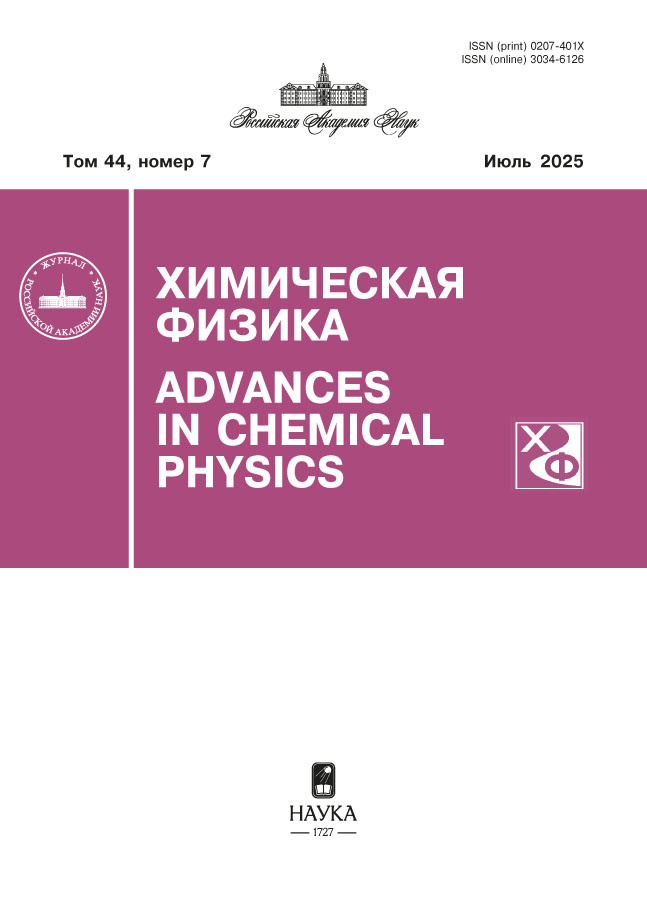Dynamics and Energy of Combustion of Ultra-Lean Mixtures of Hydrogen with Air in a Limited Volume
- Autores: Yakovenko I.S.1, Kiverin A.D.1, Melnikova K.S.1
-
Afiliações:
- Joint Institute for High Temperatures of the Russian Academy of Sciences
- Edição: Volume 44, Nº 7 (2025)
- Páginas: 106-114
- Seção: Combustion, explosion and shock waves
- URL: https://bioethicsjournal.ru/0207-401X/article/view/687637
- DOI: https://doi.org/10.31857/S0207401X25070111
- ID: 687637
Citar
Resumo
In this paper, the combustion dynamics inside a closed volume filled with pre-mixed hydrogen-air mixtures with a composition close to the lower flammability limit is investigated based on a detailed numerical analysis. A comparison of flame evolution features is made depending on the initiation mechanism: a point ignition source or continuous heat supply from a heated region on the reactor wall. It is shown that with point ignition, the completeness of hydrogen combustion is significantly lower than with heat supply from the wall. It is also found that, despite the low chemical activity of ultra-lean hydrogen-air mixtures, the combustion process has a positive balance between the energy release during chemical reactions and the heat supplied to the reactor from the heated wall.
Texto integral
Sobre autores
I. Yakovenko
Joint Institute for High Temperatures of the Russian Academy of Sciences
Autor responsável pela correspondência
Email: yakovenko.ivan@bk.ru
Rússia, Moscow
A. Kiverin
Joint Institute for High Temperatures of the Russian Academy of Sciences
Email: yakovenko.ivan@bk.ru
Rússia, Moscow
K. Melnikova
Joint Institute for High Temperatures of the Russian Academy of Sciences
Email: yakovenko.ivan@bk.ru
Rússia, Moscow
Bibliografia
- Makhviladze G.M., Yakush S.E. // Proc. Comb. Inst. 2002. V. 29. P. 195. https://doi.org/10.1016/S1540-7489(02)80028-1
- Ciccarelli G., Dorofeev S. // Prog. Energy Combust. Sci. 2008. V. 34(4). P. 499.
- Lovachev L.A. // Combust. Sci. Technol. 1978. V. 18. P. 153. https://doi.org/10.1080/00102207808946847
- Ronney P.D. // Combust. and Flame. 1990. V. 82. P. 1. https://doi.org/10.1016/0010-2180(90)90074-2
- Shoshin Y., van Oijen J., Sepman A., de Goey L. // Proc. Comb. Inst. 2011. V. 33. P. 1211. https://doi.org/10.1016/j.proci.2010.06.030
- Coward H.F., Jones G.W. Limits of flammability of gases and vapors. Bulletin 503, US Bureau of Mines, 1952
- Levy A. // Proc. R. Soc. A. 1965. V. 283. P. 134. https://doi.org/10.1098/rspa.1965.0011
- Babkin V.S., V’yun A.V. // Combust. Explos. Shock Waves (Engl. Transl.) 1976. V. 12. P. 196. https://doi.org/10.1007/BF00744886
- Babkin V.S., Zamashchikov V.V., Badalyan A.M. et al. // Combust., Explos. Shock Waves (Engl. Transl.) 1982. V. 18. P. 164. https://doi.org/10.1007/BF00789613
- Volodin V.V., Golub V.V., Kiverin A.D. et. al. // Combust. Sci. Technol. 2020. V. 193. № 2. P. 225. https://doi.org/10.1080/00102202.2020.1748606
- Yakovenko I., Kiverin A., Melnikova K. // Fluids. 2021. V. 6. P. 21. https://doi.org/10.3390/fluids6010021
- Carmel M.K., Experimental results pertaining to the performance of thermal igniters / NUREG/CR-5079; SAND-87-3139. Nuclear Regulatory Commission, Washington, DC (USA). Div. of Engineering and Systems Technology; Sandia National Labs., Albuquerque, NM, USA, 1989.
- Yakovenko I., Melnikova K., Kiverin A. // Acta Astronaut. 2024. V. 225. P. 218. https://doi.org/10.1016/j.actaastro.2024.09.013
- Kuo K. Principles of combustion. 2nd ed. Hoboken, New Jersey: Wiley-Inter- science; 2005. ISBN 0-471-04689-2.
- Rehm R.G., Baum H.R. // J. Res. Natl. Bur. Stand. (U. S.). 1978. V. 83. Issue 3. P. 297.
- McGrattan K., McDermott R., Hostikka S., et.al. Fire Dynamics Simulator Technical Reference Guide V. 1: Mathematical Model, Tech. Rep. NIST Special Publication 1018-1, U.S. Department of Commerce, National Institute of Standards and Technology. Gaithersburg, MD, 2019. https://doi.org/10.6028/NIST.SP.1018.
- NRG computational package for reactive flows modeling. https://github.com/yakovenko-ivan/NRG
- Yakovenko I., Kiverin A. // Fire. 2023. V. 6. P. 23. https://doi.org/10.3390/fire6060239
- Bykov V., Kiverin A., Koksharov A., Yakovenko I. // Comput. Fluids. 2019. V. 194. P. 104310.
- Keromnes A., Metcalfe W.K., Heufer K.A., et.al. // Combust. and Flame. 2013. V. 160. № 6. P. 995. https://doi.org/10.1016/j.combustflame.2013.01.001
- Lovachev L.A. // Ibid. 1976. V. 27. P. 125. https://doi.org/10.1016/0010-2180(76)90012-2
- Buckmaster J. // Combust. Sci. Technol. 1992. V. 84. P. 163. https://doi.org/10.1080/00102209208951851
- Tereza A.M., Agafonov G.L., Anderzhanov E. K. et al. // Russ. J. Phys. Chem. B. 2023. V. 17. № 4. P. 974. https://doi.org/10.1134/S1990793123040309
- Tereza A.M., Agafonov G.L., Anderzhanov E.K. et al. // Russ. J. Phys. Chem. B. 2023. V. 17. № 4. P. 1294. https://doi.org/10.1134/S1990793123060246
- Tereza A.M., Agafonov G.L., Anderzhanov E.K. et al. // Russ. J. Phys. Chem. B. 2024. V. 18. P.965. https://doi.org/10.1134/S1990793124700416
- Tereza A.M., Agafonov G.L., Anderzhanov E.K. et al. // Russ. J. Phys. Chem. B. 2023. V. 17. № 2. P. 425. https://doi.org/10.1134/S1990793123020173
Arquivos suplementares













